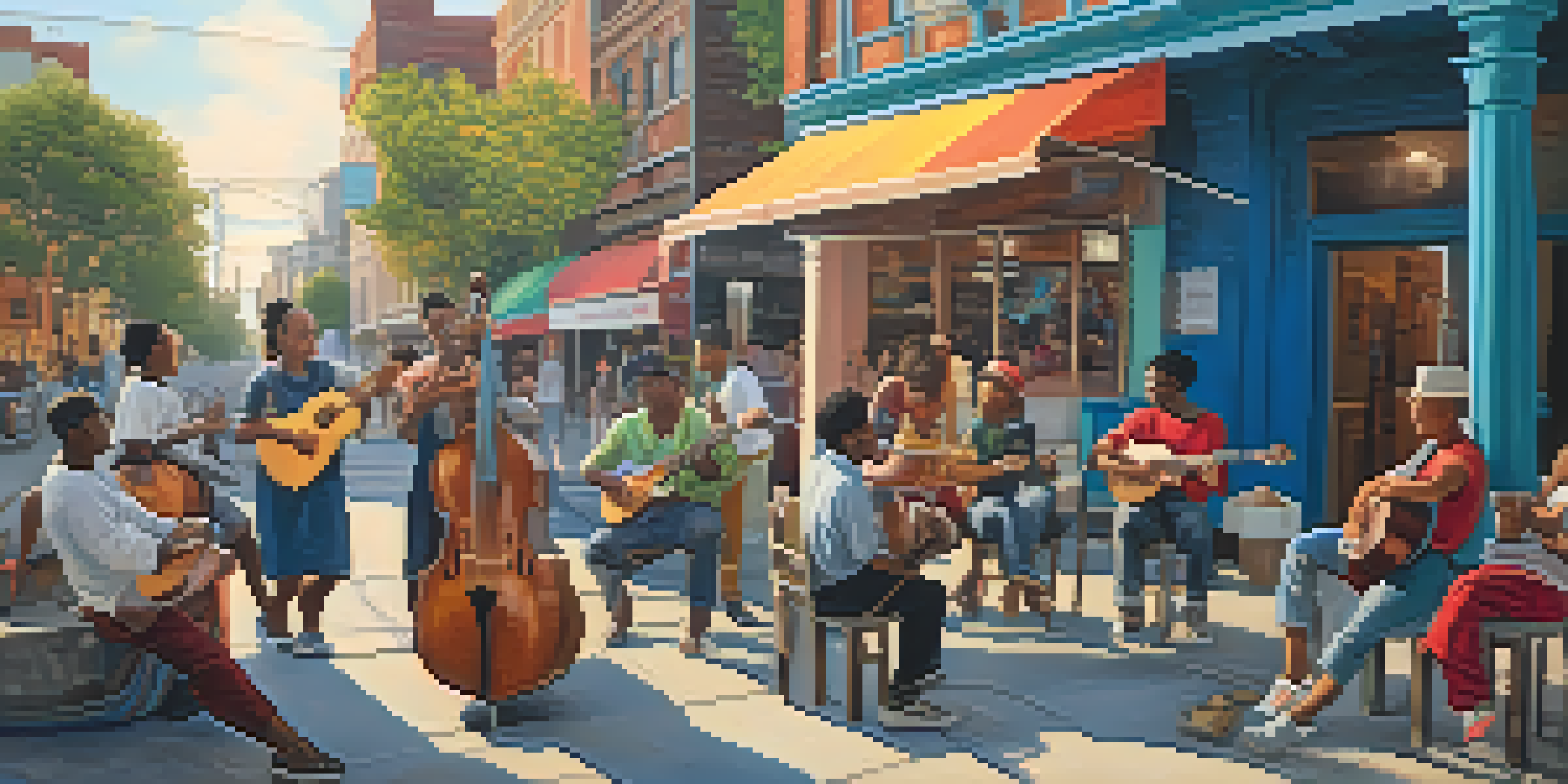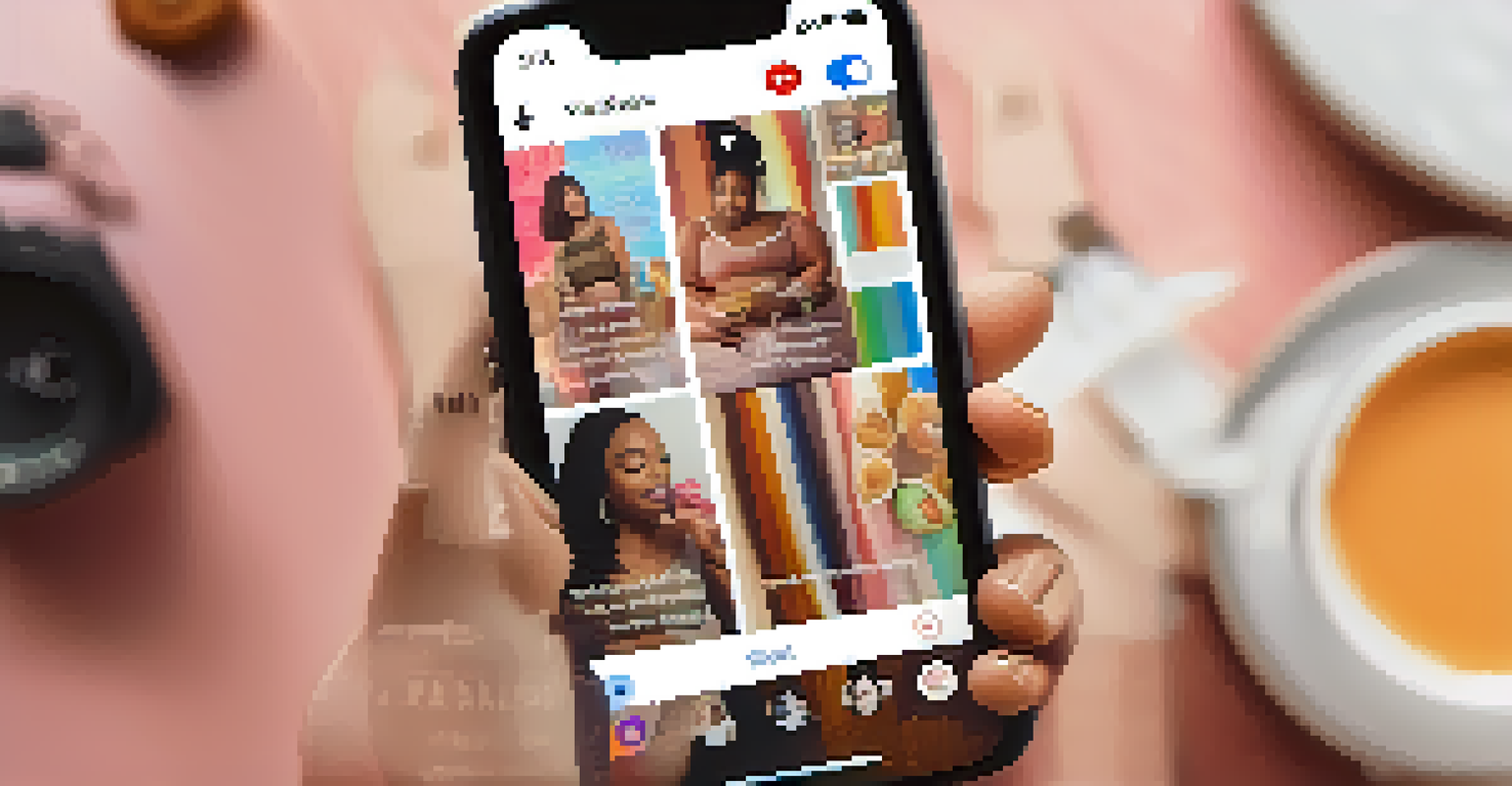The Role of Social Media in Shaping Gender Representation

Understanding Gender Representation in the Digital Age
Gender representation refers to how different genders are portrayed in society, which is increasingly shaped by social media. Platforms like Instagram, Twitter, and TikTok not only reflect existing biases but also create new narratives. In this digital landscape, traditional media's influence is challenged, allowing for diverse voices to emerge.
Social media is the ultimate equalizer. It gives a voice and a platform to anyone willing to engage.
For instance, influencers on these platforms can redefine beauty standards and gender roles simply by sharing their stories and experiences. This democratization of voice positions social media as a powerful tool in shifting perceptions around gender. Ultimately, it enables a more inclusive dialogue, making room for a range of identities to be represented.
However, the challenge remains in ensuring that this representation is authentic and not just a trend. The constant cycle of content can lead to oversimplification or tokenism, where certain identities are featured without depth. Thus, understanding the nuances of gender representation online is essential for meaningful change.
The Power of Influencers in Shaping Gender Norms
Influencers play a crucial role in shaping gender norms, often setting trends that resonate with millions. Their ability to connect with audiences creates a unique opportunity to challenge stereotypes and promote diverse representations. For example, male beauty influencers have emerged, pushing back against the notion that self-care is solely a female pursuit.

These influencers often share personal narratives that resonate with their followers, fostering a sense of community and acceptance. When they openly discuss issues like mental health or body positivity, it encourages others to do the same, breaking down gendered barriers. This shift not only normalizes conversations around masculinity and femininity but also broadens the spectrum of what it means to be gendered in today's world.
Social Media Redefines Gender Norms
Platforms like Instagram and TikTok empower diverse voices, challenging traditional gender roles and beauty standards.
However, the responsibility lies with these influencers to ensure their messages are genuine and inclusive. When influencers misrepresent or oversimplify gender issues for likes and shares, it can perpetuate harmful stereotypes. Therefore, it's essential for audiences to critically engage with content and advocate for authentic representation.
Hashtags and Movements: Amplifying Gender Issues
Hashtags have become powerful tools for amplifying gender issues, allowing movements to gain momentum almost overnight. Campaigns like #MeToo and #TimesUp have not only raised awareness about sexual harassment but have also reshaped conversations around consent and accountability. These movements thrive on social media, as they provide a platform for survivors to share their stories and connect with others.
We need to reshape our own perception of how we view ourselves. We have to step up as women and take the lead.
The viral nature of these hashtags helps to unify voices across the globe, making it clear that gender-based violence and inequality are not isolated issues. When people see their experiences validated through collective storytelling, it fosters a sense of solidarity and encourages others to speak out. Thus, social media becomes a space for empowerment and advocacy.
However, the challenge remains in sustaining these movements beyond viral moments. As discussions fade from trending topics, the urgency to continue advocating for change can diminish. Therefore, it’s crucial to keep the momentum alive through ongoing conversations and actions that address the root causes of gender inequality.
The Double-Edged Sword of Gender Representation Online
While social media has the potential to enhance gender representation, it can also perpetuate harmful stereotypes. The algorithms that dictate what content is seen often favor sensationalism, which can lead to the promotion of unrealistic gender norms. For instance, images that conform to traditional beauty standards tend to receive more engagement, reinforcing narrow definitions of attractiveness.
This can create a cycle where individuals feel pressured to conform to these ideals, leading to negative self-esteem and body image issues. Moreover, the backlash against those who challenge these norms can be intense, creating a culture of fear around authentic self-expression. As a result, many may choose to present a curated version of themselves, rather than their true selves.
Influencers Impact Gender Representation
Influencers have the ability to reshape gender perceptions by sharing authentic stories and promoting inclusivity.
To counteract these negatives, it’s vital for users to curate their feeds mindfully and support content that champions diversity and authenticity. Engaging with creators who promote body positivity and inclusive narratives can help shift the focus from unrealistic portrayals to genuine representation. In doing so, social media can evolve into a space that celebrates all identities.
Social Media's Role in Challenging Traditional Gender Roles
Social media has become a catalyst for challenging traditional gender roles, allowing individuals to express themselves freely and authentically. For instance, platforms enable people to showcase hobbies and interests that may not align with societal expectations, such as men embracing fashion or women in science. This visibility encourages others to pursue their passions, regardless of gender.
Moreover, the rise of non-binary and gender-fluid identities on social media presents a challenge to the binary understanding of gender. When individuals share their experiences and express their identities, it fosters greater acceptance and understanding among audiences. This shift helps to dismantle rigid gender norms, paving the way for a more inclusive society.
However, the path to acceptance is not without obstacles. Those who defy traditional roles often face backlash and scrutiny online, which can be disheartening. It’s crucial for communities to rally behind these individuals, providing support and amplifying their voices to create a culture of acceptance and understanding.
The Impact of Social Media on Body Image and Gender Perception
Social media significantly impacts body image and gender perception, often presenting idealized versions of beauty and lifestyle. The constant exposure to curated feeds can lead individuals to compare themselves to these images, resulting in feelings of inadequacy. This is particularly pronounced among young people, who may internalize these standards as the norm.
Conversely, social media also offers a platform for body positivity movements that challenge these unrealistic standards. Campaigns encouraging self-love and acceptance are gaining traction, showcasing a broader range of body types and appearances. This shift is essential in promoting a healthier relationship with one's body and fostering acceptance of diverse identities.
Hashtags Amplify Gender Issues
Movements like #MeToo leverage social media to raise awareness about gender-based violence and foster solidarity among survivors.
Ultimately, the responsibility lies with both creators and consumers to promote authentic representation. By supporting influencers and campaigns that celebrate diversity, individuals can help reshape the narrative around body image and gender perception. This collective effort can lead to a more inclusive and accepting online environment.
The Future of Gender Representation in Social Media
As social media continues to evolve, so does its role in shaping gender representation. The growing demand for authentic content is prompting platforms to prioritize diverse voices and experiences. This shift suggests that the future may hold greater representation for marginalized genders, fostering inclusivity in the digital space.
Emerging technologies, such as AR and VR, also offer exciting possibilities for gender representation. They enable users to explore different identities in immersive ways, paving the way for deeper understanding and acceptance. This innovation could redefine how individuals interact with gender, breaking down barriers and fostering empathy.

Nevertheless, it’s crucial to remain vigilant about the potential for backlash against these changes. As society grapples with evolving norms, resistance may arise from those who cling to traditional views. Advocating for continued progress and inclusivity will be vital in ensuring that social media remains a space where all identities can thrive.